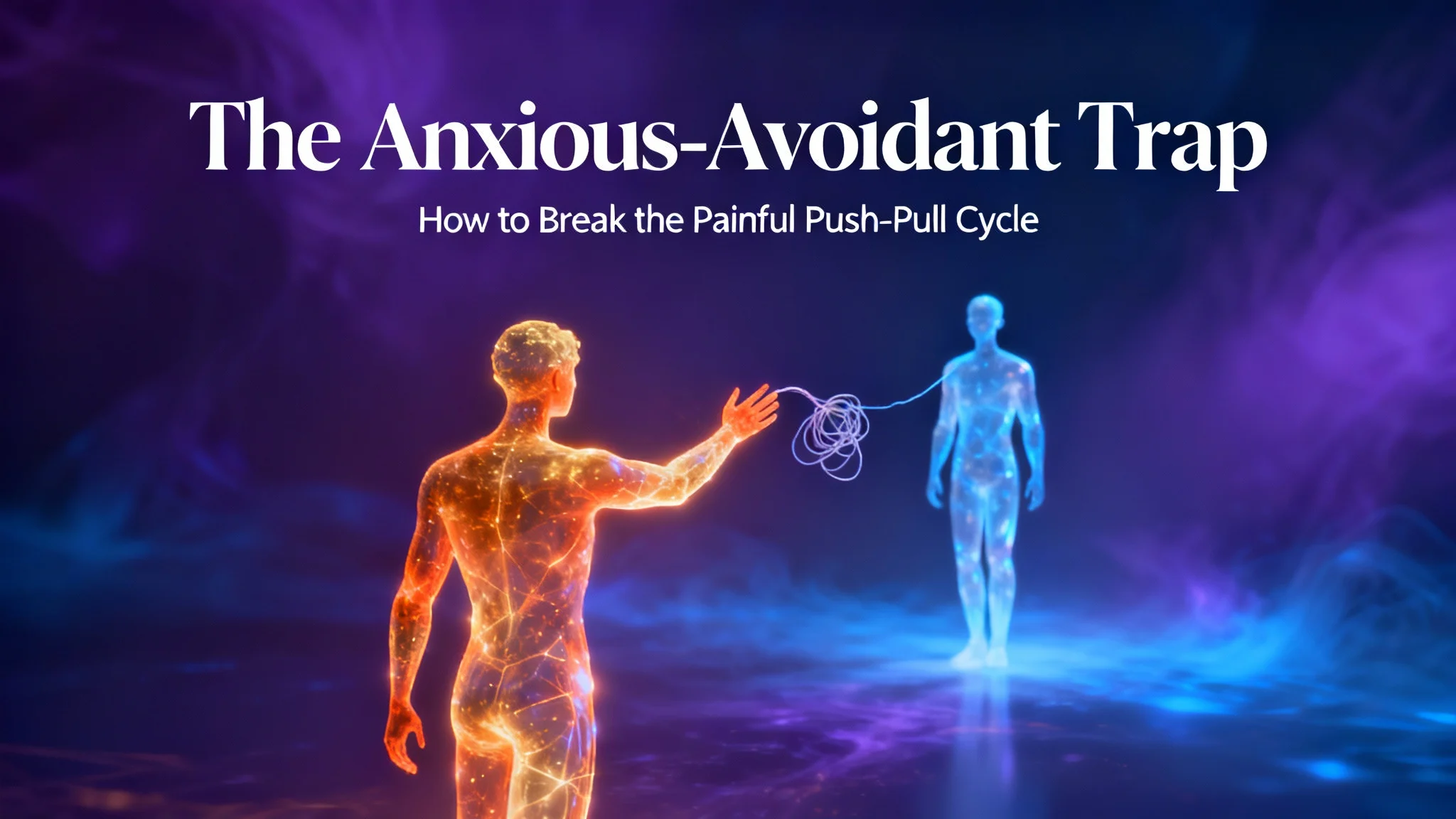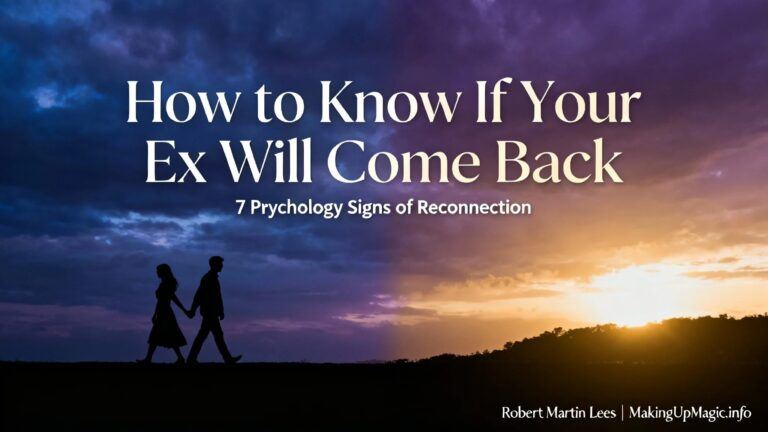Does this feel familiar? You have a few amazing days of intense connection. You feel seen, loved, and secure. Then, like clockwork, they start to pull away. The texts slow down. They get quiet. They need “space.”
Your heart plummets. A panic starts to rise in your chest. You try to pull them closer—sending a text, asking what’s wrong, seeking reassurance—but it only seems to push them further and faster away. You feel abandoned and terrified. They feel suffocated and overwhelmed.
If you’re nodding your head right now, you’re not crazy. You’re likely caught in one of the most common and painful relationship dynamics there is: **The Anxious-Avoidant Trap.**
I call it “the dance.” It’s a destructive cycle fueled by two different, opposing attachment styles. But here is the most important thing you need to hear: You can’t change your partner’s steps, but you can change yours. And when you do, the entire dance has to change.
On This Page:
The Dance Explained: The Anxious Pursuit and the Avoidant Retreat
This dynamic is rooted in Attachment Theory. In simple terms:
- The Anxious Partner: Deep down, you fear abandonment. When you sense distance, your nervous system screams “DANGER!” You try to close the gap to feel safe again. This is called “protest behavior”—calling, texting, seeking reassurance. You need connection to calm down.
- The Avoidant Partner: Deep down, they fear being engulfed or losing their independence. When you seek intense connection, their nervous system screams “DANGER!” They try to create distance to feel safe again. This is called “deactivating”—pulling away, shutting down, needing space. They need solitude to calm down.
Can you see the tragic irony? The very thing you do to feel safe (pursue) is the very thing that triggers your partner’s deepest fear. And the very thing they do to feel safe (retreat) is the very thing that triggers yours. It’s a perfect, painful loop.
Why You Can Only Change Your Steps
You cannot convince an avoidant partner not to need space. You cannot make them see that their retreat hurts you. Trying to do so is part of the anxious pursuit—it is a step *in* the dance, not a step *out* of it.
The only person whose nervous system you can control is your own. The only steps you can change are yours. The moment you stop pursuing, the dynamic is forced to shift. When you learn to self-soothe your anxiety instead of asking them to, you take back all of your power.
Feeling lost in the cycle? It’s okay to need a map. Our 60-second Breakup Clarity Quiz can help you identify your next best step based on your unique situation.
The Cycle-Breaker’s Toolkit: 3 Steps to Change the Dance
When you feel that familiar panic rise as they pull away, your job is not to manage them. It is to manage yourself. This is how you change your steps.
- Name the Feeling: Stop and say to yourself, “This is my attachment anxiety flaring up. This feeling is a memory of past pain, not necessarily a reflection of current reality.” Separating the feeling from the fact is the first step to taking its power away.
- Do Not React for 90 Minutes: This is the hardest part. Your instinct is to text, to call, to fix it NOW. You must resist. The urge to engage in protest behavior is a chemical reaction in your brain. Give it 90 minutes. Go for a walk. Listen to a podcast. Do anything to let the initial wave of panic subside before you act.
- Give Yourself the Reassurance You Crave: Instead of texting “Are we okay?” to them, write it down in a journal. Then, write back to yourself as a loving friend would. “Yes, we are okay. He just needs some space, and that’s not a reflection of my worth. I am safe and I can handle this feeling.” This practice, over time, rewires your brain to seek safety from within, not from them.
When you can give them space without panicking, you are no longer pursuing. The dance stops. This creates the safety for the avoidant partner to actually miss you and want to come closer. Sometimes, understanding their perspective, like the deep-seated need for respect and autonomy, can help. We explore this in our review of programs like “His Secret Obsession,” which are built on this kind of male psychology.
Breaking this cycle is not easy, but it is the path to true self-worth and a healthier, more stable relationship—whether it’s with this person or the next.
Frequently Asked Questions (FAQ)
Q: Can an anxious and avoidant person have a successful relationship?
A: Yes, absolutely. But it requires both partners to have self-awareness. The anxious partner must learn to self-soothe and manage their protest behaviors, and the avoidant partner must learn to offer reassurance before they retreat. It takes work, but it is possible.
Q: Is it my fault for being “too needy”?
A: No. Your attachment style is not your fault. It’s a learned adaptation from your earliest relationships. The term “needy” is often used to shame the anxious partner, but your need for connection is valid. The work is to learn how to meet that need in healthy ways that don’t push your partner away.
Q: How do I know if he’s just an avoidant, or if he’s genuinely lost interest?
A: This is the key question. The pattern is the biggest clue. An avoidant partner pulls away but almost always comes back once they feel the pressure is off. Someone who has lost interest pulls away and the distance just keeps growing. By learning to stop the pursuit, you get your answer: if he comes back, it’s the dance. If he doesn’t, it was a true ending.







